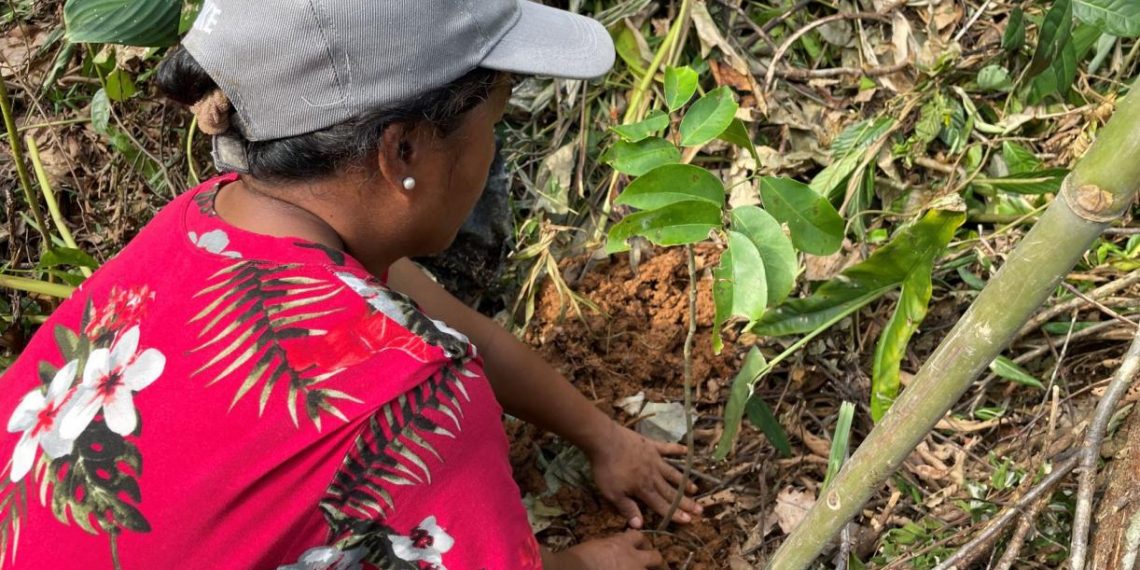Let’s start with the good news: People around the world are planting trees. Faced with vast expanses of degraded land, opportunities for restoration abound. Investors and funders are spending real money to support new initiatives and communities, and pledges to protect, plant and restore more than 1 trillion trees have inspired millions of people to act.
Now, the bad news: There’s little information about what happens to those trees once they’re in the ground. How many survive? Are they truly restoring ecosystems and storing carbon as they grow? Are local communities benefitting from those trees?
Those key metrics of success are rarely tracked after saplings are dug into the soil.
Most organizations seeking funding for restoration projects are earnest. As with anything else, there are a few bad actors that seek to turn consumer money into trees that won’t grow tall and strong in the long term. But the thousands of locally-led organizations that invest passion, energy and expertise into planting trees do have a positive impact on people and the planet.
So how do they measure their impact?
Conservation International and World Resources Institute have developed a field-test version of our Tree Restoration Monitoring Framework. This tool was developed for the Priceless Planet Coalition, a restoration alliance led by Mastercard that aims to restore 100 million trees by 2025.
All 18 projects funded by the Coalition now monitor 13 required and six optional metrics of success and will continue to do so in the five years after they plant each tree. These indicators capture the transformation of saplings into trees and document the potential benefits of restoration for local communities, climate and biodiversity.
Tree growers follow detailed instructions called protocols that explain exactly how to collect the data, ensuring that progress is tracked consistently across the portfolio. Every protocol is applicable to any tree-growing project around the world and covers a wide range of techniques, ranging from the more traditional, such as tree and mangrove planting, to the more novel, such as efforts that accelerate the recovery of natural forests.
To check the collected data, researchers at Conservation International and World Resources Institute work hand-in-hand with tree growers in the field to pinpoint the location of each Priceless Planet Coalition planting site. These digital boundaries help monitor where sprouting trees make progress toward the framework’s key indicators. This data can help assess the impact of projects and reduce the risk of failure by tracking where fires, floods and other threats to the land — what researchers call disturbances — have threatened planting sites in the past.
World Resources Institute and Conservation International use these geospatial boundaries, field-collected data, and cutting-edge satellite techniques to assess important metrics of success for each site, such as the percentage of land covered by trees and the estimated amount of planet-warming carbon stored.
This framework is different from others in the tree restoration sector because it emphasizes a limited number of metrics and provides clear guidance on how to collect the data.
It’s one challenge to write a comprehensive, global framework; it’s another to put it into practice. We quickly learned that we needed a tool that could collect, aggregate, organize and display all this data. In came the Integrated Monitoring Platform, a web and mobile app hosted on the TerraMatch platform, which connects tree growers with finance, technical support and data. Launched in April, the IMP provides these champions with a single place where they can submit their monthly progress reports and will also show the results of our satellite analysis. Behind the scenes, it stores and organizes all incoming data, making it easy for project developers and researchers to access and use.
How is progress so far? The Priceless Planet Coalition project in Puerto Princesa, Philippines, began in early 2022, and the team at Conservation International-Philippines has mapped out exactly where restoration is happening. Through the IMP, project leaders also reported the number of trees growing in nurseries, how many they’ve planted and the total days that local people have been paid to work on the project. They will continue to add more sites to their project in late 2022 and 2023 and measure the baseline number of trees on each of their sites.
In the coming years, they will review that data and track progress toward their goals. Jeanne Tabangay, Palawan Biodiversity Corridor Director at Conservation International-Philippines said it best: “We appreciate the very clear monitoring protocols for this project. This keeps us on track.”
In Brazil, we tested the protocol designed to monitor the number of trees restored and their survival rate. That inspired us to create new diagrams to make the protocol more user friendly for data collectors in the field. After we gather and incorporate this important feedback, the framework will be formally published in 2023.
Monitoring the success of restoration projects isn’t simple. Collecting, organizing and analyzing data takes time, funding and training. Most of all, it takes a commitment to transparency. Our hope is that this Tree Restoration Monitoring Framework can become a useful tool for tree growers around the world. It’s time to shift the focus away from simply putting trees in the ground and towards their long-term survival and growth. That’s when tree-planting turns into ecosystem restoration – and brings prosperity to communities around the world.
Isabel Hillman is the restoration monitoring manager at Conservation International. Edward Saenz is the project monitoring manager and Will Anderson is the land restoration projects manager at World Resources Institute. This article represents the views of World Resources Institute and Conservation International.


